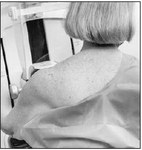Sharp declines in cancer screening


The total number of cancer screening tests received by women through the Centers for Disease Control and Prevention’s (CDC) National Breast and Cervical Cancer Early Detection Program (Early Detection Program) declined by 87 percent for breast cancer and 84 percent for cervical cancer during April 2020, as compared with the previous five-year averages for that month.
Prolonged delays in screening related to the COVID-19 pandemic may lead to delayed diagnoses, poor health consequences and an increase in cancer disparities among women already experiencing health inequities. “This study highlights a decline in cancer screening among women of racial and ethnic minority groups with low incomes when their access to medical services decreased at the beginning of the pandemic,” said Amy DeGroff, Ph.D., MPH, CDC health scientist and lead author. “They reinforce the need to safely maintain routine healthcare services during the pandemic, especially when the health-care environment meets COVID-19 safety guidelines.”
Screening declines observed in the Early Detection Program coincided with the rapid increase of COVID-19 cases in spring 2020. Factors that might have contributed to the declines during this time include screening-site closures and the temporary suspension of breast and cervical cancer screening services due to COVID-19. The requirement or recommendation to stay at home and the fear of contracting COVID-19 also likely deterred individuals from seeking health-care services, including cancer screening.
Published in the journal Preventive Medicine, the study examined COVID-19’s impact on the Early Detection Program’s screening services during January-June 2020.
Among the findings:
• Declines in breast cancer screening varied from 84 percent among Hispanic women to 98 percent among American Indian/ Alaskan Native women.
• Declines in cervical cancer screening varied from 82 percent among Black women to 92 percent among Asian Pacific Islander women.
In April, the number of screening tests for breast cancer declined in metro (86 percent), urban (88 percent) and rural (89 percent) areas compared to the respective five-year averages. The decline for cervical cancer screening tests was 85 percent and 82 percent for metro and rural areas, respectively, and 77 percent for urban areas.
Screening volumes had begun to recover in all groups by June 2020, the end of the observation period.
“CDC encourages health-care professionals to help minimize delays in testing by continuing routine cancer screening for women having symptoms or at high risk for breast or cervical cancer,” said DeGroff. “The Early Detection Program can help women overcome barriers to health equity by educating them about the importance of routine screening, addressing their concerns about COVID19 transmission, and helping them to safely access screening through interventions like patient navigation.”
For more information about the CDC’s work on breast and cervical cancer, please visit www. cdc.gov/cancer/nbccedp/. —cdc.gov






